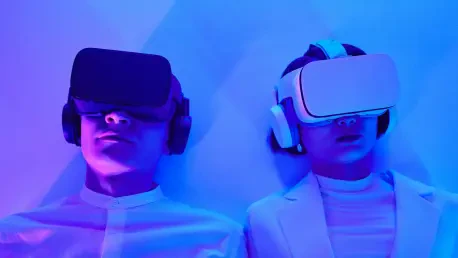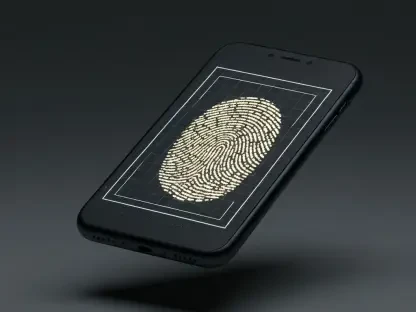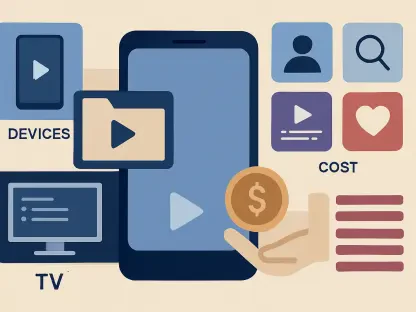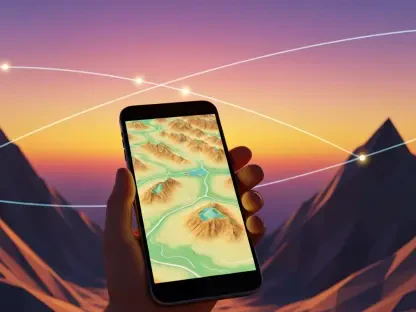Apple is making substantial strides in augmented and virtual reality technologies, positioning itself to dominate the wearable tech space. With plans to launch seven AR/VR devices by the end of this year, Apple is building on its existing Vision Pro headset with a dual approach: sophisticated headsets for professional users and smart glasses for the everyday consumer. This strategy echoes Apple’s historical practice of releasing tiered product lines, akin to their varied iPhone offerings ranging from budget-friendly to high-end models. Such a move points to an ambitious goal of capturing both premium and mainstream audiences in a rapidly evolving tech environment dominated by major players like Meta and Google.
Diversifying the AR/VR Product Line
High-End Headsets for Professionals
Apple’s Vision Pro headset evolution is poised to elevate virtual and augmented reality experiences, not just for consumers, but particularly for professionals seeking advanced technological tools. This new headgear is projected to offer an immersive experience, integrating sophisticated AR features that could transform workflows and enhance productivity in professional settings. Equipped with features like high-resolution displays and precision tracking, the Vision Pro headset is likely to cater to industries requiring complex data visualization and interaction—potentially impacting fields ranging from engineering to healthcare.
The development of these headsets signals a shift in how professionals interact with digital environments, ushering in a new era of immersive workspaces where real-world applications meet cutting-edge innovations. However, Apple’s challenge will be to ensure seamless integration with existing systems, posing a hurdle that requires strategic partnerships and technical enhancements. Such ventures will likely see Apple flex its prowess in software development, leveraging its robust ecosystem to provide compelling solutions that effortlessly merge virtual interfaces with user-friendly applications, solidifying its position in the professional AR/VR market.
Everyday Use Smart Glasses
Complementing the Vision Pro’s high-end capabilities, Apple is set to introduce smart glasses tailored for daily tasks, facilitating effortless connectivity and increased productivity in everyday routines. These glasses are expected to bring AR into the mainstream with streamlined features that blend seamlessly with Apple’s ecosystem, potentially revolutionizing mobile computing. By leveraging intuitive interfaces and facilitating interaction with iOS applications, smart glasses can enhance user convenience through real-time information overlays, navigation aids, and communication enhancements, integrating naturally into daily life.
With Apple’s reputation for slick design and user-centric technologies, these smart glasses may redefine how users experience personal tech. However, challenges abound, notably in optimizing battery life and maintaining a balance between form factor and functionality. Apple’s design strategy will need to address these concerns head-on to ensure its smart glasses appeal to consumers without sacrificing usability or aesthetic allure. Collaboration with tech partners will be crucial, as the company aims to tackle potential supply chain obstacles and meet consumer expectations for innovative, durable products that seamlessly integrate into the Apple ecosystem.
Apple’s Competitive Edge and Market Challenges
Key Innovations and Software Integration
Apple’s expertise in software integration stands out as a significant advantage in establishing a cohesive and reliable user experience. Leveraging its established iOS and the newly introduced visionOS platform, Apple seeks to provide a seamless blend of virtual functionalities with everyday tasks. This integration aims at creating a user-friendly interface where AR features can be accessed and managed reliably across devices within the Apple ecosystem. For users accustomed to Apple’s signature products, the introduction of visionOS represents an opportunity to engage with immersive technology without facing high adaptability barriers, reinforcing Apple’s reputation for intuitive tech solutions.
Nonetheless, Apple faces stiff competition in the AR/VR space, particularly against companies who have established footholds in the industry, such as Meta and Google. While Apple’s mastery over software development offers certain advantages, maintaining their competitive edge demands continuous innovation and responsiveness to market dynamics. The thriving interest in mixed reality applications and ever-shifting consumer preferences challenge Apple to stay ahead in the technological race. The fostering of strategic alliances and timely market interventions will be essential in amplifying their competitive position and ensuring sustained interest in their AR/VR offerings.
Navigating Supply Chain and Market Dynamics
In pursuing its ambitious plans within the AR/VR sector, Apple encounters potential supply chain challenges and dynamic market pressures that could influence product timelines and costs. These factors require adept management and foresight, particularly as the company navigates the complexities of manufacturing cutting-edge devices at scale. Apple’s involvement in global supply chains necessitates extensive coordination to mitigate risks associated with the procurement and availability of essential components, ensuring product launches proceed smoothly and according to schedule. Moreover, fluctuating consumer demands and competitive pressures further underscore the necessity for agile strategies that can adapt to unforeseen shifts in the market landscape.
To counteract potential hindrances, Apple is expected to leverage its industrial acumen to explore innovative solutions and strengthen relationships with key suppliers. Strategies could involve securing strategic partnerships that promise technological advancements while complying with ethical manufacturing practices. This proactive approach promises to alleviate challenges, allowing Apple to sustain its momentum and fulfill its ambitious roadmap to reshape AR/VR technology across diverse audiences. The tech industry awaits with anticipation as Apple seeks to set new standards in wearables, redefining how consumers engage with augmented reality in a constantly connected world.
Future Directions and Industry Impact
Apple is advancing significantly in the realms of augmented and virtual reality, aiming to lead the wearable technology sector. By the end of this year, the company plans to introduce seven AR/VR devices, expanding on its current Vision Pro headset. Apple’s strategy involves a two-pronged approach: high-end headsets tailored for professional use and smart glasses designed for everyday consumers. This approach mirrors Apple’s traditional tactic of offering tiered product lines, similar to their range of iPhones, which cater to both budget-conscious consumers and those seeking high-end models. Such a strategy underscores Apple’s ambitious objectives to appeal to both high-end and mass-market audiences. This move is set against a backdrop of fierce competition in the tech industry, where giants like Meta and Google are major players. By diversifying its product offerings, Apple aims to establish a strong foothold in both premium and mainstream segments, targeting a rapidly changing technology environment.









